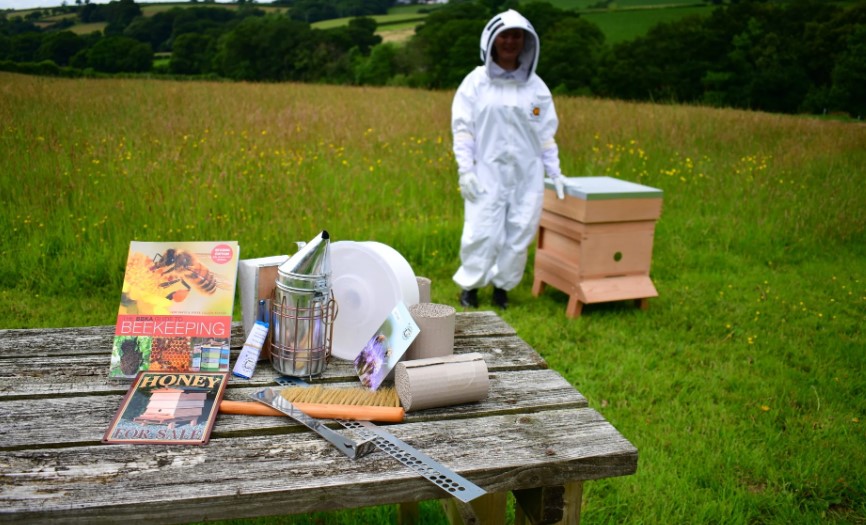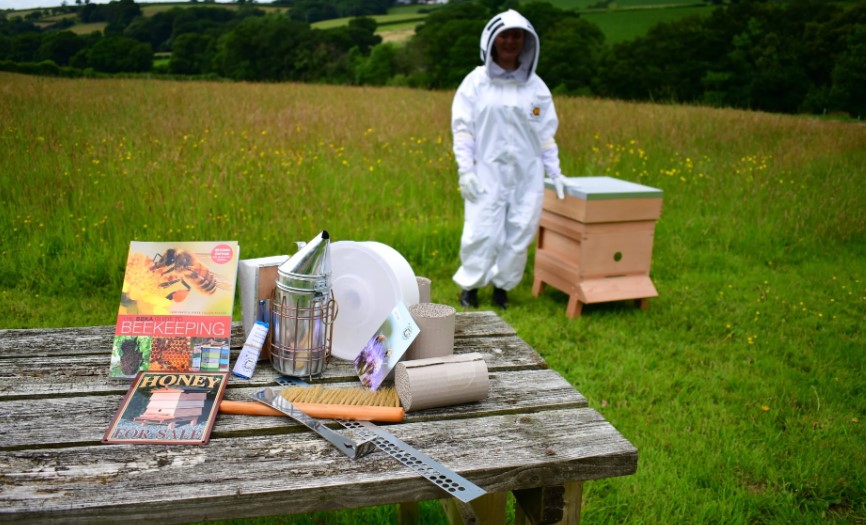

Beekeeping is an incredibly rewarding practice that not only provides you with fresh honey but also supports pollination and the environment. Whether you’re a beginner or an experienced beekeeper, having the right supplies is crucial to maintaining a healthy, thriving hive. Equipping yourself with essential tools and accessories ensures that your bees remain safe, productive, and well-managed. This guide covers everything you need to know about must-have honey bee supplies to support your colony.
1. Beehive and Hive Components
A beehive is the most critical piece of equipment in beekeeping. It serves as the home for your colony and should be carefully selected based on your goals and environment. The most popular types of beehives include:
- Langstroth Hive: The most commonly used hive type, consisting of stacked boxes with removable frames. It provides easy access for honey extraction and hive management.
- Top-Bar Hive: A horizontal hive design that allows for a more natural comb-building approach. It is preferred by beekeepers looking for a low-maintenance, foundationless system.
- Warre Hive: A vertical hive similar to the Langstroth but designed to mimic a natural tree cavity. It promotes a more natural beekeeping approach with minimal intervention.
Key Components of a Beehive
- Hive Boxes (Supers) – Provide living space for the bees. The number of boxes depends on the colony size and honey production needs.
- Frames and Foundation – Frames support honeycomb construction, and foundation sheets provide guidance for wax building. Plastic or wax foundations are available.
- Bottom Board – The base of the hive, providing ventilation and protection from pests. Screened bottom boards help with mite control.
- Inner and Outer Covers – Protect the hive from weather conditions and predators. An inner cover provides insulation, while an outer cover shields against rain and wind.
2. Protective Beekeeping Suit and Gear
Handling bees requires the right protective gear to minimize the risk of stings and ensure safety. A good beekeeping suit provides shipping honey bees full-body coverage while allowing breathability for comfort.
Essential Protective Gear
- Beekeeping Suit or Jacket – A full suit offers complete protection, while a jacket is ideal for quick hive inspections. Choose a ventilated material for hot climates.
- Gloves – Leather or synthetic gloves protect hands from stings while allowing flexibility. Some beekeepers prefer to work barehanded for better control.
- Bee Veil – A separate or attached veil shields your face and neck from stings. It should be lightweight and allow for clear visibility.
- Boots – High boots or leg covers prevent bees from crawling up your legs.
3. Bee Smoker and Fuel
A bee smoker is a must-have tool for calming bees during hive inspections. The smoke disrupts their alarm signals, reducing defensive behavior.
Choosing the Right Fuel for Your Smoker
- Dried pine needles
- Wood pellets
- Cotton fibers
- Cardboard strips
- Burlap
Using clean, non-toxic fuel ensures that the smoke remains cool and does not harm the bees.
4. Hive Tool and Frame Grip
A hive tool is a simple yet essential item that every beekeeper should have. It is used to pry apart hive boxes, scrape excess propolis, and remove frames during inspections.
Types of Hive Tools
- Standard Hive Tool – A flat metal bar with a curved end for prying.
- J-Hook Hive Tool – Features a hooked end, making it easier to lift frames.
- Frame Grip – A clamp-like tool that helps lift frames securely without damaging the comb.
5. Bee Feeder for Supplemental Feeding
Bees rely on nectar and pollen for nutrition, but during certain seasons, supplemental feeding is necessary. A bee feeder provides sugar syrup, pollen substitutes, or fondant to sustain the colony when natural food sources are scarce.
Types of Bee Feeders
- Entrance Feeder – Placed at the hive entrance for easy access.
- Top Feeder – Positioned on top of the hive for larger feeding capacity.
- Frame Feeder – Fits inside the hive and mimics natural foraging behavior.
6. Queen Excluder and Marking Tools
A queen excluder is a grid placed between hive boxes to prevent the queen from laying eggs in honey storage areas. This keeps honey free from larvae and makes harvesting easier.
Marking the Queen Bee
Finding the queen during inspections can be challenging. Using a queen marking pen, beekeepers can place a small colored dot on her thorax for quick identification. The color used corresponds to the year of birth.
7. Honey Extraction and Storage Equipment
Harvesting honey requires proper tools to extract, filter, and store it efficiently.
Essential Honey Extraction Tools
- Honey Extractor – A manual or electric device that spins honey out of the frames using centrifugal force.
- Uncapping Knife or Fork – Removes wax cappings from honeycomb before extraction.
- Honey Strainers and Filters – Separate wax particles and impurities from honey.
- Storage Containers – Glass jars or food-grade plastic containers preserve honey freshness.
Proper extraction methods ensure high-quality honey and maximize yield.
8. Pest and Disease Control Supplies
Bees are vulnerable to pests and diseases that can weaken or destroy a colony. Regular hive inspections and preventive measures help maintain bee health.
Common Beekeeping Pests
- Varroa Mites – Tiny parasites that feed on bees and transmit viruses. Treatments include mite strips, essential oils, and screened bottom boards.
- Wax Moths – Larvae that damage comb structures. Freezing frames and using traps help prevent infestations.
- Small Hive Beetles – Invasive pests that lay eggs in hives. Beetle traps and strong colonies reduce their impact.
Bee Diseases and Prevention
- American Foulbrood (AFB) – A bacterial disease affecting larvae. Infected hives must be destroyed to prevent spread.
- Chalkbrood – A fungal infection causing larvae to harden and die. Keeping the hive dry and ventilated helps prevent outbreaks.
- Nosema – A fungal disease affecting bee digestion. Feeding probiotics and maintaining hive hygiene are effective preventive measures.
Beekeeping is a fulfilling and essential practice that requires the right tools for success. From hive components and protective gear to honey extraction equipment and pest control methods, each item plays a vital role in ensuring a thriving colony. Whether you are just starting out or expanding your apiary, investing in high-quality bee supplies will make hive management easier and more rewarding. With proper care and the right equipment, you can enjoy healthy bees, abundant honey, and a successful beekeeping experience.
